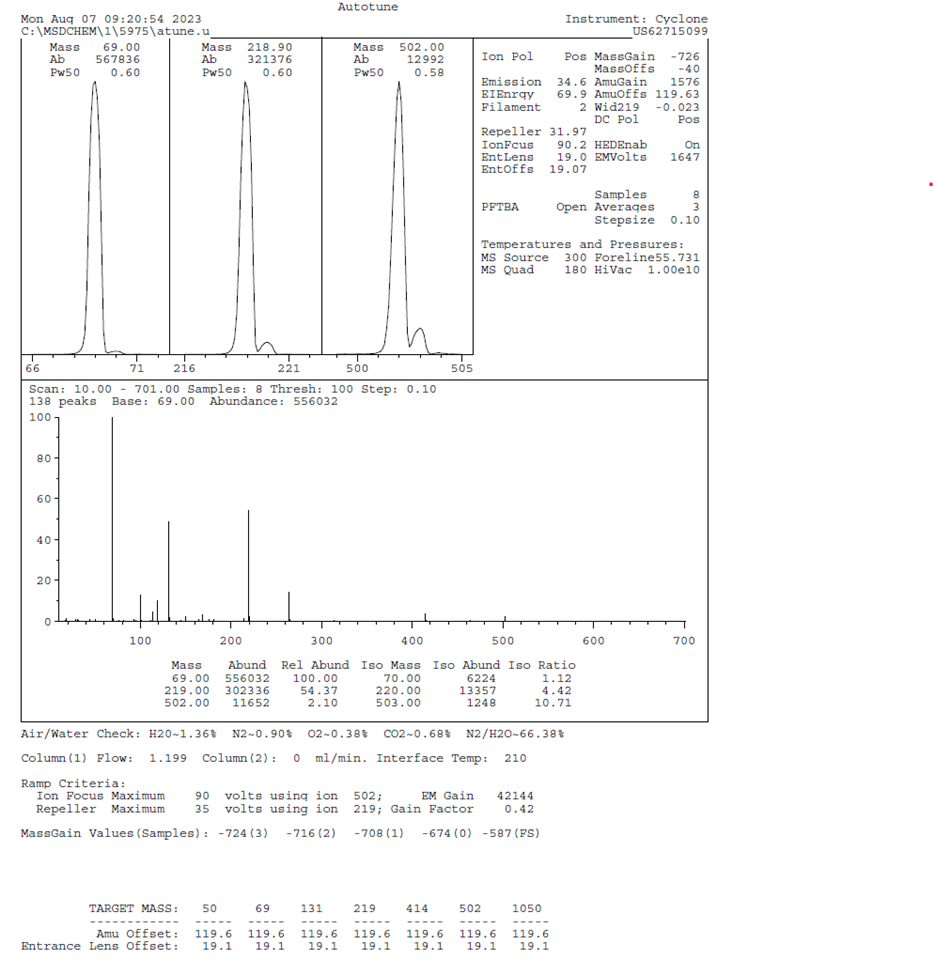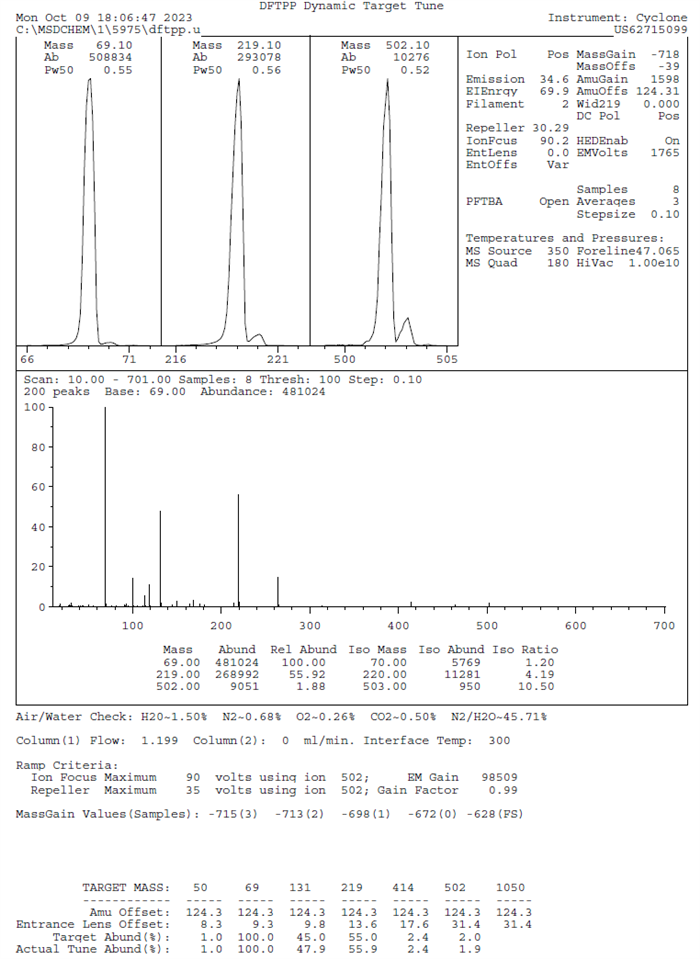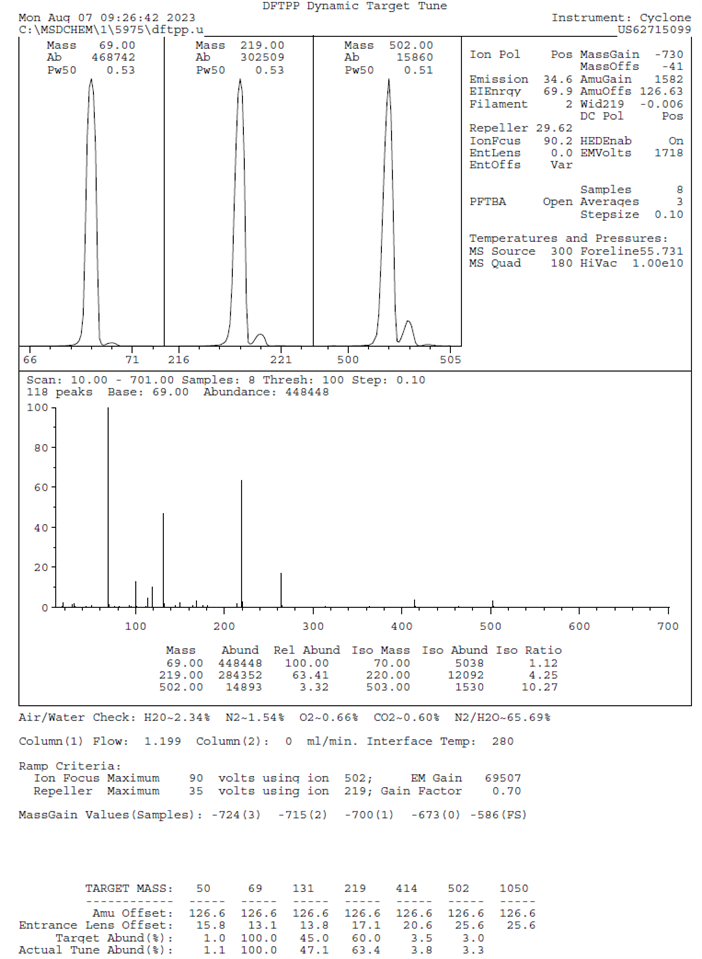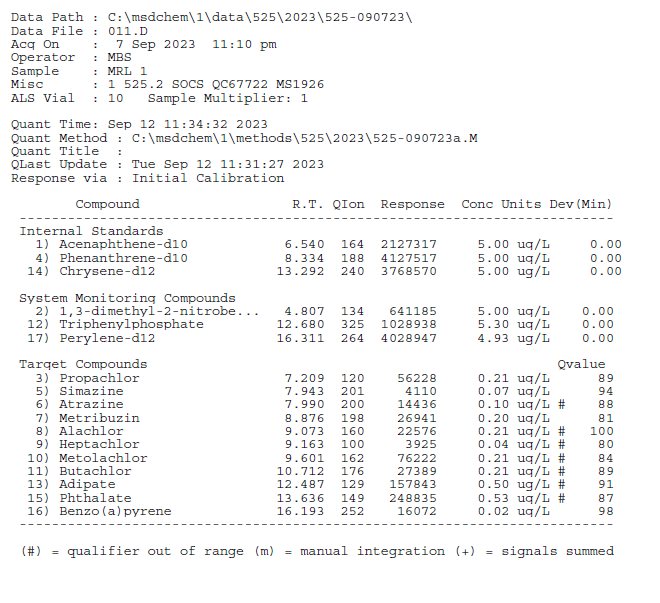I am analyzing water samples for EPA 525.2 on a GC 6890 and a 5975 MSD. I have encountered an almost 10 fold decrease in response over all analytes a few months back after a power surge in the lab and have not been able to "fix" it. Since then, I have cleaned the EI source, changed the pump oil, and replaced the GC column, (Restek RTX-5MS). The analytical acquisition method have not been changed. The tune files do not have any glaring differences before and after this power surge. I have included autotune, DFTPP tune and a low level comparison from before and after.
I was told I should attempt to clean the HED as it might be dirty as a result of the power surge. Any other suggestions would be appreciated.






